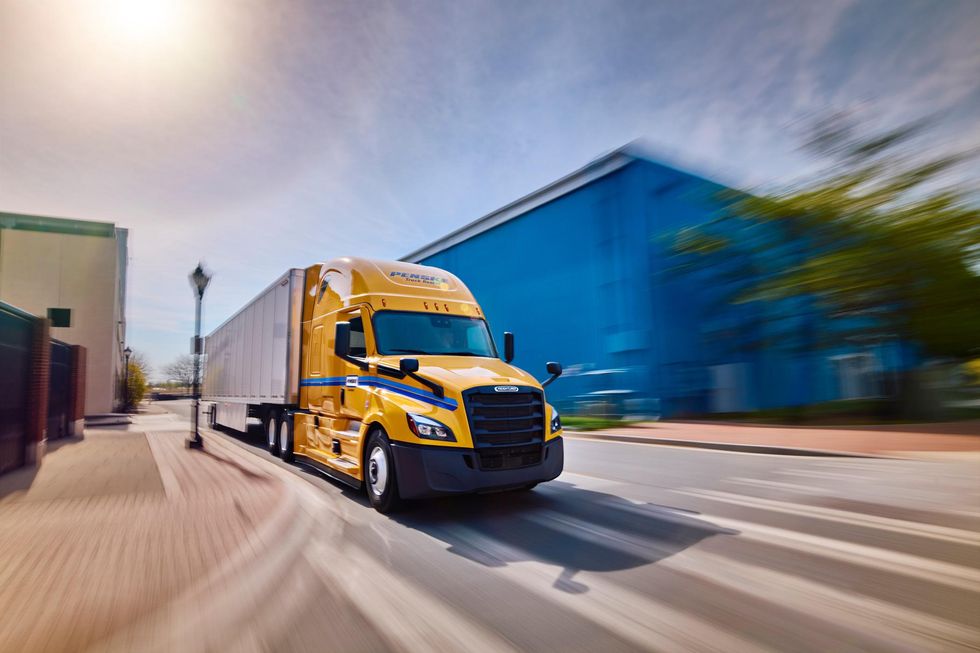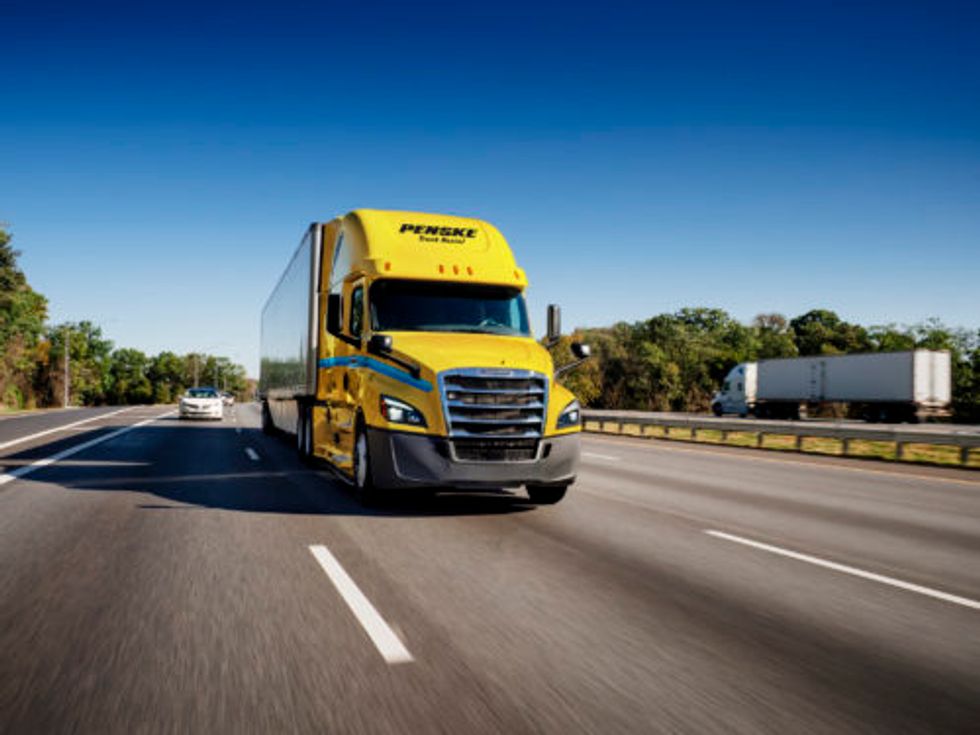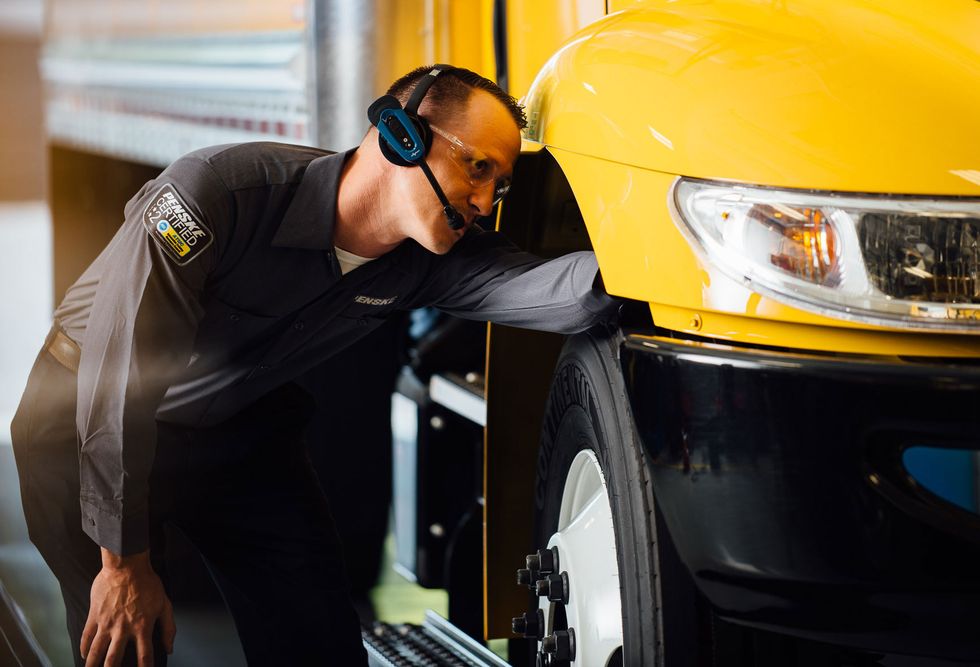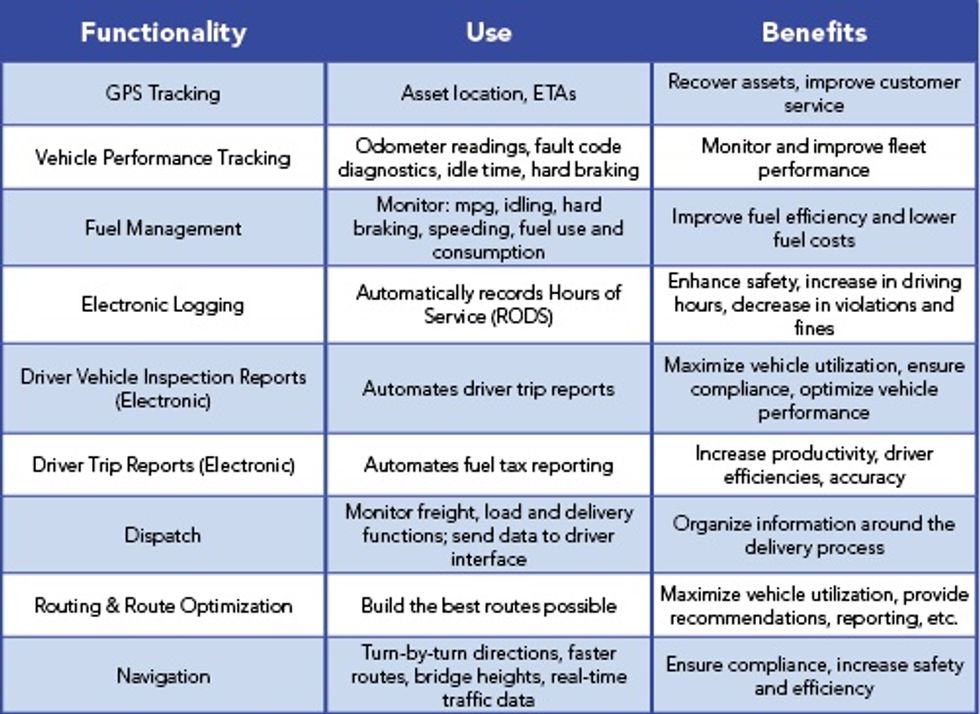Private Fleets are Providing Control, Stability and Value
Private fleets have grown their market share and are using in-house transportation as a strategic resource to enhance service, control costs and improve safety. The National Private Truck Council's 2024 Benchmarking Survey found that shipments and volume increased last year as private fleets positioned themselves as a value-added transportation solution.
“This year, 75% of all the outbound products are being hauled on the back of private carriers, and that's an all-time high,” said Tom Moore, NPTC executive vice president.
Inbound freight volumes also increased, with private carriers hauling 35% of inbound freight, up from 31% in 2023.
During the pandemic, a lot of companies turned to private fleets because they couldn’t get capacity from for-hire carriers. Even though 72% of respondents indicated that capacity was more available in 2023, private fleets continued to expand.
“I frankly expected that trend to stabilize or go down, but what we're finding now is that the private fleets are controlling that supply chain,” Moore said while presenting the report on August 22. “They're enjoying the fruits of their labor, so to speak, and they're not giving it back.”
Moore was joined by Gary Petty, NPTC’s CEO, Jim Lager, executive vice president of Penske Truck Leasing, Mike Schwersenska, general manager of Brakebush Transportation, and Cassie Wood, transportation manager at Packing Corporation of America.
Schwersenska said that following the pandemic, quotes for moving goods that normally cost $5,000 were coming in for $15,000. "It really made the value proposition of the private fleet pretty apparent," he said.
Private fleets expect to add drivers and equipment over the next five years, continuing a trend that has been consistent for the past decade. “The most notable and prominent example of that is Procter and Gamble starting its own private fleet after 180 years of not having a private fleet at all,” Petty said. “They started their own private fleet in September of 2019 and are now up to over 800 drivers.”
Tracking Key Performance Indicators
NPTC's Benchmarking Survey, which is sponsored by Penske, provides metrics in several operating areas. “As things continue to get more and more chaotic, it makes data even that much more important,” Lager said. “Having metrics and things like this benchmarking study helps private fleet operators get their heads and their arms around their operations.”
According to the report, annual mileage among respondents averaged 84,000. The average length-of-haul for private carriers’ outbound movements to retail locations increased slightly to 207 miles, up from 178 in 2023.
Despite the slight increase, private fleets' average length-of-haul has been trending downward over the last eight years and remains significantly lower than the for-hire average.
Fleets use a combination of leasing, ownership and rental strategies. Owned equipment increased 4% year-over-year and leasing expanded 7%. Among those that rent, rental activity increased 13%.
“We see a lot of customers come to us and want to try a private fleet or try a new market. They rent trucks until they make a more permanent decision whether it is to lease or buy,” Penske’s Lager said, adding that the increase in leasing was due, in part, to difficulty sourcing new equipment. “The marketplace still is not really back into balance yet, and it is going to take a while.”
Investing in Equipment
Fleets that rely on leasing have shorter trade cycles for equipment—an average of 4.8 years versus 6.7 years for companies that own most of their equipment. Driven by the trade cycles, leased fleets have a fuel economy of 7.2 miles per gallon compared to the 6.8 miles per gallon that owned fleets reported.
“A lot of our fleets are taking advantage of the technological innovations when it comes to safety, fuel economy and operations to get newer model equipment out on the road,” NPTC’s Moore said.
Late-model equipment is looking more and more like a pickup truck inside the cab, which makes drivers' working environment more comfortable and intuitive, Lager added.
Safety performance is also higher among private fleets, which are aggressively managing their safety and working to mitigate risk. Among respondents, Department of Transportation reportable accidents averaged 2.61 accidents per million miles of travel, which is about three times better than the industry average. “Respondents report the fleet is at fault in just 30% of those cases,” Moore said.
Private fleets have invested heavily in active safety technologies. Nearly all respondents—80% or more—reported using speed monitoring, lane departure, collision warnings and in-cab cameras.
The survey found that nearly all respondents outsource at least a portion of their heavy-duty maintenance spend, and 46% of fleets outsource nearly all of their maintenance spend. The number is up 3% over 2023 and the highest ever in the survey.
Lager said Penske's contract maintenance that is performed on fleets' owned vehicles has grown. "Those owned vehicles tend to run longer. I think that's part of the reason they come to us. They need maintenance help because they're getting running units longer,” he said.
Addressing Top Challenges
Driver-related issues are the top challenge cited within the report. Driver turnover averages about 20%, a slight uptick from 2023's 19% but down from 2022's 22.5%. The turnover is consistent with the aging workforce and the increased number of drivers opting to retire.
“We see a lot lower driver turnover on the private fleet due to the time and attention given to these drivers,” Wood said, adding that retirement is among the top reasons her drivers retire. The estimated cost of turnover is roughly $12,000.
One of the most significant benefits private fleets can offer is predictable routes and guaranteed home time. "People want to be home. They want to coach their baseball teams,” Lager said. “We’ve shifted our fleet to a relay type of situation because people want to be home.”
Other challenges include safety (accidents and injuries), internal staffing, costs and the economy.
Providing Value
The top reason companies operate a private fleet is to provide exceptional levels of service, but in-house transportation also helps them control transportation costs and enhance their control over the supply chain.
“At the c-suite level, we’ve proven time and time again how important the private fleet is. They're giving us more capital today than they ever have before because they see the potential,” Wood said, adding that a private fleet also gives the company a much more detailed view of where trucks and trailers are at all times.
Both Wood and Schwersenska said increasing efficiency is essential, and both see artificial intelligence playing a more important role in improving routing and streamlining operations to get more work done during the day. “I’m about six weeks away from implementing our first AI projects,” Schwersenka said.
Penske recently launched Catalyst AI to give private fleet operators better visibility of the operating metrics and compare their operations to other like fleets and other geographies. “It is benchmarking, just like this report,” Lager said. “I think AI, technology and connectivity are going to unlock all kinds of operating efficiencies going forward.”
By “Move Ahead” Staff




